|
Sword Fern (Polystichum munitum) is the largest native fern at Leaning Oaks. Big and showy it forms an important part of our garden landscape as well as occurring in the wild parts of the property. Sword fern is evergreen with the older fronds dying off after the new fronds have begun to emerge. Sword Fern was used by First Nations as a food item in times of scarcity. The rhizomes were peeled and roasted. I don't know if it is still used as a food item and I must admit when I look at the rhizomes they don't look particularly appealing.
In the garden they respond very well to light fertilizing several times over the growing season and the plants there grow to imposing sizes. On years when we don't get heavy snowfalls they sail through the winter, on snowy winters the big funnel shaped plants get flattened. There are ten species of Polystichum in British Columbia, two at Leaning Oaks, the other is the Polystichum imbricans (species #25).
0 Comments
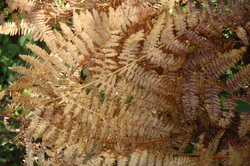 Fall is the time when Bracken Fern (Pteridium aquilinum) is most notable, as the fronds turn from green to an attractive tan. While an attractive native fern, it is a bit of a thug in the garden, where vigorous growth and long underground runners make it a difficult species to manage. Formerly the fiddleheads (the unfurled young shoots) were picked and used as a spring vegetable;however, the consumption of Bracken has been linked to stomach cancer and breakdown of Vitamin B, so it is no longer recommended for human consumption. Indeed, very little seems to eat Bracken in the wild - I seldom find a stem chewed by any sort of herbivore. Studies in the UK and South America indicate only a small number of insects consume the species -and they tend to be highly specialized. Bracken is one of the most widely distributed species in the world..we have hiked through Bracken in the highlands of New Guinea and the Andes of Venezuela, the French countryside and cooler areas in Australia. 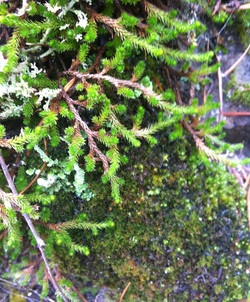 To most people, Wallace's Selaginella (Selaginella wallecei) looks like a moss. In reality, it is more closely related to ferns than it is to mosses, and, like ferns, produces spores directly from the mature plant. Like many of our local mosses that grow on dry rock outcrops it has an amazing capacity for surviving being dried out. While the species isn't very well known, people may know Selaginella lepidophylla , or Resurrection plant, which is sometimes sold in nurseries as a curiosity - coming to life quickly after watering from a seemingly dead plant. While Wallace's Selaginella isn't as showy as the Resurrection Plant, its ability to turn green and start growing after being baked dry by the summer is just as remarkable. For a clip of a "resurrecting" Selaginella go to https://www.youtube.com/watch?v=BMiQpjRQZP4 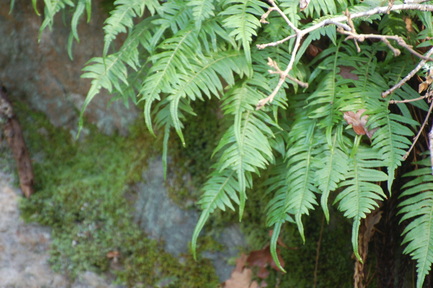 The predominant colour of Leaning Oaks during the winter months is green. The carpet of mosses that cover the rock outcrops and tree trunks green up, the winter annuals sprout and Licorice Fern (Polypodium glycyrrhiza) looks its best with the new foliage it started to produce in the fall. Most years the new growth starts with the first heavy rainfall in August or September. Here the species grows best on rock outcrops or Big-leaf Maple trunks up above the reach of Black-tailed Deer. The individuals that are below the browse line are small and stunted and never seem to be able to develop to their full potential. For tips on growing this species in a winter hanging basket (that you only have to plant once every twenty years or so) click on the button. |
AuthorsTwo biologists on a beautiful property armed with cameras, smart phones and a marginal knowledge of websites took up the challenge of documenting one species a day on that property. Join along! Posts and photographs by Leah Ramsay and David Fraser (unless otherwise stated); started January 1, 2014. Categories
All
Archives
May 2025
|
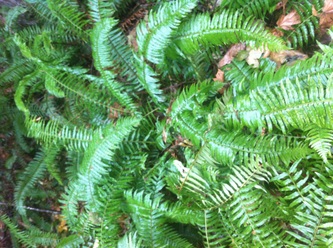
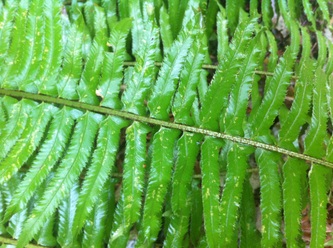
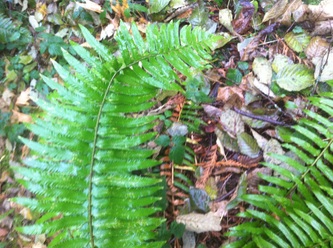
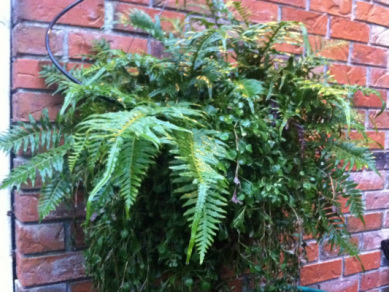
 RSS Feed
RSS Feed